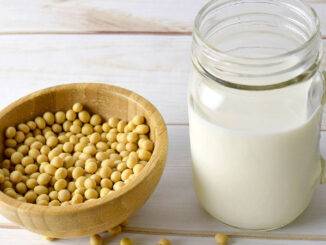
The term “Water Kefir” has recently gained popularity, and any Google search on this term returns hundreds of meaningful results. However, both scientifically and historically, Water Kefir is not related in any way to the product known as Kefir. Historically, the product known as “Kefir” refers to Milk Kefir only, and the term “Water Kefir” is non-existing.
Not surprisingly, the Wikipedia entry related to Kefir covers the Milk Kefir only and there is no direct Wikipedia entry related to “Water Kefir”. Instead, a Google search on the term “Water Kefir” actually returns a Wikipedia entry related to a product called “Tibicos”, “Japanese water crystals” or “California bees”. The term “Water Kefir” is mentioned only as an “alias”, and for the only reason that it has already gained popularity.
So, can Water Kefir be at all called Kefir, and how are these two products related to each other?
Is Water Kefir really Kefir?
If you visit the regions where Kefir originates – the Caucasus mountains (particularly the mount Elbrus region), the Balkans, and Eastern Europe, the only product that the local population calls “Kefir” is Milk Kefir. The term “Water Kefir” does not even exist.
The same applies to countries like Turkey, Russia, Byelarus, Ukraine, Kazakhstan, Armenia, Azerbaijan, Uzbekistan, or the Baltics where Kefir is most widespread and consumed: in these countries, the word “Kefir” only relates to the fermented milk product usually referred as “Milk Kefir”.
Only recently a product called “Water Kefir” emerged thanks to the widespread (but wrong) perception that the “tibicos” (a.k.a. “Water Kefir grains”) are a kind of “water-based variation” of the Milk Kefir grains. There’s even a widespread (but also wrong) belief that Water Kefir grains can somehow be “converted” into Milk Kefir grains, and vice-versa.
No doubt, these perceptions are completely wrong. In reality, the Milk Kefir grains and the tibicos (or “Water Kefir grains”) are completely different products and are in no way related to each other.
What are the differences and similarities between the Milk Kefir grains and the Tibicos?
The main similarity between the Milk Kefir grains and the Tibicos (or Water Kefir grains) is the fact that they are both a SCOBY – a symbiotic culture of bacteria and yeast. Beyond that, everything else – their nutritional values and microbial composition – should normally be completely different since both products originate from completely different sources and regions of the world.
Milk Kefir (also known as just “Kefir”) originates from the North Caucasian region and was initially a result of a spontaneous fermentation of horse milk kept in goatskin bags, traditional for the region at that time. Caucasian people then called it Koumiss and quickly discovered its many health-related advantages and superb taste. Later on, the naturally self-formed Kefir grains were spread throughout many Central and Western Asian regions, and Kefir started to be prepared with many other kinds of milk – cow, sheep, goat, buffalo, and even camel milk.
The word “Kefir” has also a purely local, Caucasian etymology. It comes from the word “Phir” (фыр), meaning “sour” in the Caucasian languages. Even today in lots of Eastern European and Central Asian languages, the term “Sour Milk” is used to designate some types of yogurts and Kefirs.
And yes, the widespread legend that the word Kefir comes from the Turkish word “Keyf” (pleasure, well-being) is just not true. It is untrue for the simple reason that both the product and the word “Kefir” originate from the Caucasus, and the languages spoken in the Caucasian region at that time did not include Turkish. Kefir was introduced to Turkey centuries later when the word Kefir was already existing.
Unlike Milk Kefir, the Water Kefir grains (or tibicos) are not a result of a spontaneous natural fermentation of milk but are gelatinous granules found on the pads of the Opuntia cactus originating from the opposite side of the world – Mexico. They thrive and feed on the sugars in sweetened water or sweet juices of fruits, and cannot survive in milk.
The drinks resulting from the fermentation of the Milk Kefir grains and the tibicos are also completely different. The Milk Kefir resembles and tastes like diluted yogurt, while the Water Kefir is similar to a fizzy soda drink.
But are Milk Kefir and Water Kefir grains really that different?
Quite surprisingly, the microbial compositions of Milk Kefir and Water Kefir grains (tibicos) do not seem to be as different as we could expect. In fact, both Milk and Water Kefir grains primarily contain lactic acid bacteria (LAB) from the Lactobacillus species.
Of course, there are important differences in the specific bacterial strains. While the tibicos (Water Kefir grains) contain bacteria from the genera Lactobacillus harbinensis, Lactobacillus hilgardii, Lactobacillus nagelii, Lactobacillus paracasei, Lactobacillus hordei/mali, and yeast from the genera Pichia, Saccharomyces, Candida, and Zygosaccharomyces, the bacterial strains contained in Milk Kefir are quite different, while still from the lactic acid bacterial species.
Milk Kefir grains predominantly contain Lactobacillus paracasei, Lactobacillus Acidophilus, Lactobacillus Bulgaricus, Lactobacillus Plantarum, and most importantly Lactobacillus Kefiranofaciens, forming the typical for the Milk Kefir gluey layer called Kefiran that is completely missing in Water Kefir.
As we see, even though Milk Kefir and Water Kefir both contain predominantly lactic acid bacteria (LAB), the specific strains contained in each product are quite different. Some strains, typically found in Water Kefir, like Lactobacillus harbinensis or Lactobacillus nagelii, cannot be found in Milk Kefir. And the other way round – some bacterial strains like Lactobacillus Bulgaricus or Lactobacillus Kefiranofaciens, that are typically present in Milk Kefir, are totally missing in Water Kefir.
This is not a surprise though, since these two products not only originate from completely opposite parts of the world but also owe their existence to entirely different natural phenomena.
Finally, should “Water Kefir” be at all called Kefir?
My personal opinion is no, the product commonly called “Water Kefir” should not be called Kefir at all.
Historically, and even linguistically, the word “Kefir” has been related for centuries to a single product we nowadays call “Milk Kefir”.
The term “Water Kefir” is a result of a rather superficial misconception caused by the physical resemblance between these two types of grains. Indeed, both grains are SCOBY’s, and they both have a gelatinous consistency. Yet, this is the only thing they have in common. Everything else is completely different and there are no logical reasons to call these products by the common name Kefir.
Of course, we perfectly know that the term “Water Kefir” has already gained popularity and it would be pointless to somehow try to “ban” its usage. It is worth reminding though that beyond this popularity, there are no sensible historical or scientific reasons to call the tibicos “Water Kefir grains”.
At least within this website, the standalone word “Kefir” will have a clear meaning designating only the traditional probiotic fermented milk beverage commonly known as “Milk Kefir”.



